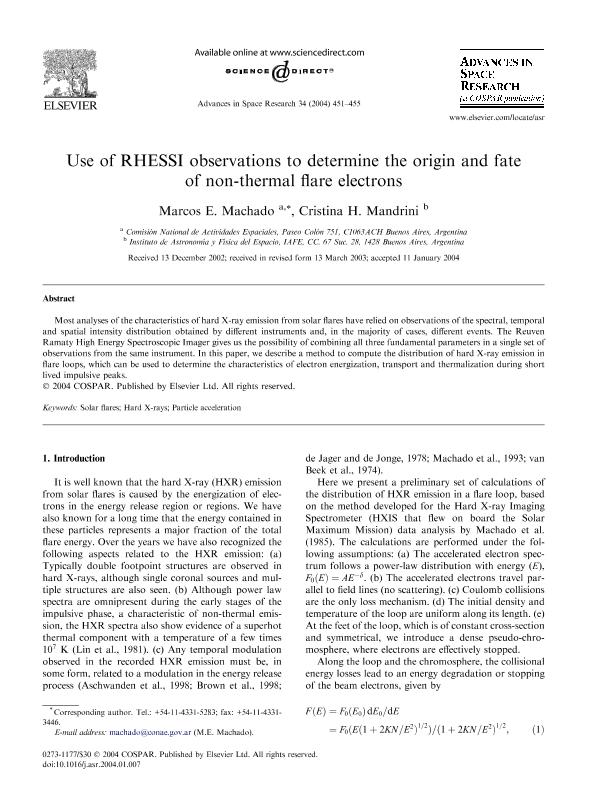Artículo
Use of RHESSI observations to determine the orign and the fate of non-thermal flare electrons
Fecha de publicación:
12/2004
Editorial:
Elsevier
Revista:
Advances in Space Research
ISSN:
0273-1177
Idioma:
Inglés
Tipo de recurso:
Artículo publicado
Clasificación temática:
Resumen
Most analyses of the characteristics of hard X-ray emission from solar flares have relied on observations of the spectral, temporal and spatial intensity distribution obtained by different instruments and, in the majority of cases, different events. The Reuven Ramaty High Energy Spectroscopic Imager gives us the possibility of combining all three fundamental parameters in a single set of observations from the same instrument. In this paper, we describe a method to compute the distribution of hard X-ray emission in flare loops, which can be used to determine the characteristics of electron energization, transport and thermalization during short lived impulsive peaks
Archivos asociados
Licencia
Identificadores
Colecciones
Articulos(IAFE)
Articulos de INST.DE ASTRONOMIA Y FISICA DEL ESPACIO(I)
Articulos de INST.DE ASTRONOMIA Y FISICA DEL ESPACIO(I)
Citación
Machado, Marcos Emilio; Mandrini, Cristina Hemilse; Use of RHESSI observations to determine the orign and the fate of non-thermal flare electrons; Elsevier; Advances in Space Research; 34; 2; 12-2004; 451-455
Compartir
Altmétricas




